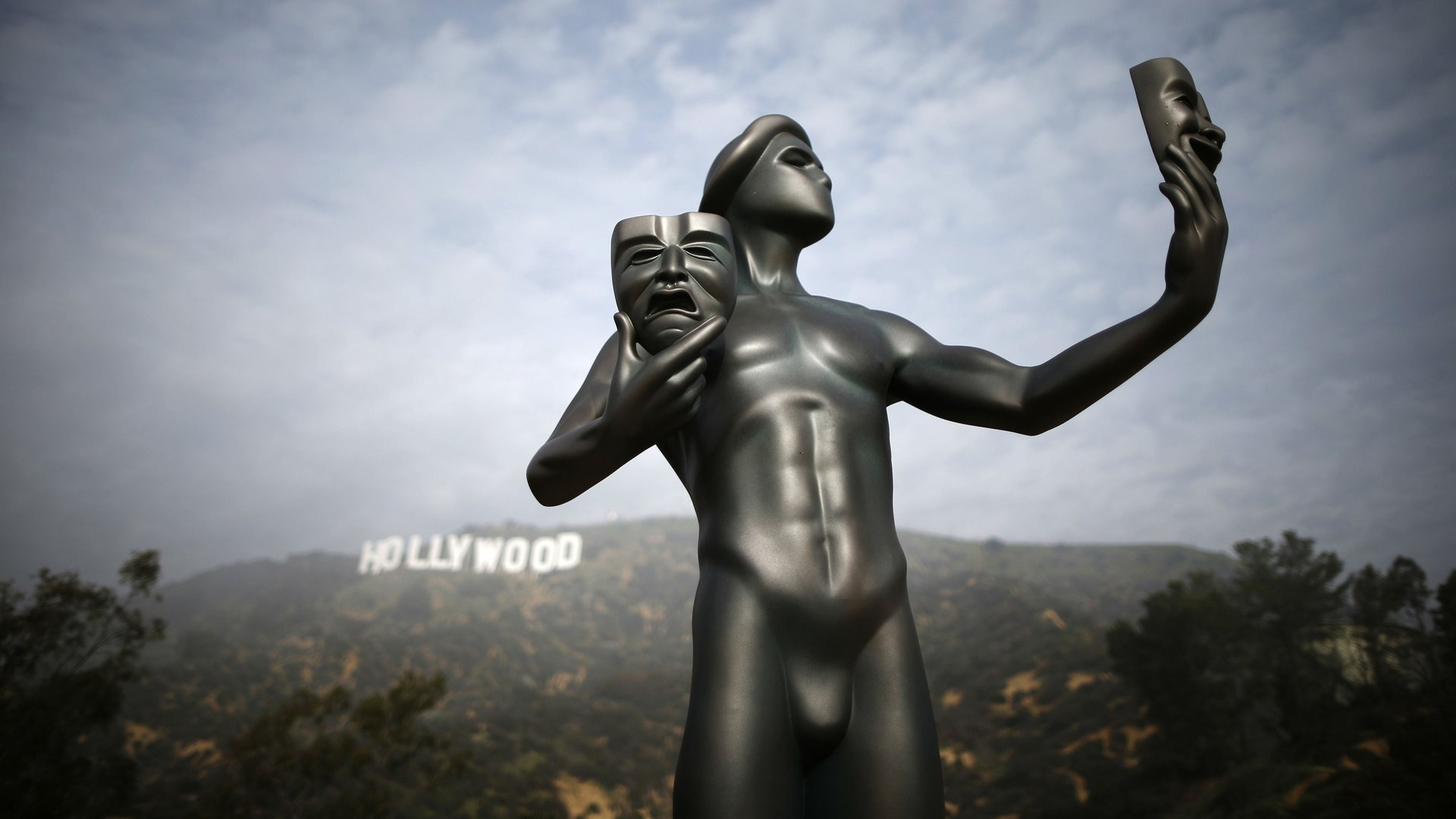Hollywood isn’t even trying to include more women. New data make it clear.
For all its talk about gender diversity, Hollywood remains as male-dominated as ever, a new analysis by Quartz has found.


For all its talk about gender diversity, Hollywood remains as male-dominated as ever, a new analysis by Quartz has found.
The percentage of women filling roles as actors, producers, writers, and directors in the American film industry hasn’t budged over the past 15 years. Representation among actors and producers is up ever-so-slightly, while female writers and directors are as scarce as ever. This chart illustrates the figures since 1990, with a five-year rolling average:
Data like these lend support to claims of gender bias in Hollywood. Earlier this year, the American Civil Liberties Union asked for an investigation into the hiring practices of major studios, pointing to a dearth of female directors.
Our analysis found that women have served as director for just 5% of the 100 highest-grossing US films since 1990. Other jobs have better representation, but not by much: Women filled under a third of acting jobs in those movies.
Even when they are on screen, women tend to get shortchanged. To get a sense of how, not just how often, they are portrayed, we used the Bechdel test. Popularized by writer Alison Bechdel, a film passes if it (1) has two women in it who (2) talk about something (3) other than a man. Just 54% of the movies we examined passed even that basic test.
The types of roles that women play are also limited. Last year, only 21 out of the 100 top films featured a female lead or co-lead, according to research by Stacy Smith at USC Annenberg (pdf). All of those female leads were younger than 45.
Fewer risks, fewer opportunities
The lack of gender diversity in Hollywood can be viewed through the lens of the industry’s financial woes. Movie ticket sales in the US have been declining since early last decade, offset only by some international growth.
Hollywood’s response has been to play it safe, producing more films based on existing material or repeats of previous hits. Our data also show that the industry is shying away from new writers and directors, regardless of gender:
That risk aversion has made it harder for women to break into the industry and for Hollywood to change its ways.
Less investment, less return
It also means that movies with high female representation are likely to receive less funding: The more women who appear in a film, the smaller its budget, according to our analysis.
That turns out to be a poor business decision: Movies with roughly equal numbers of men and women on screen have turned the highest profits, on average, between 1990 and 2014. (We calculated this by taking each movie’s domestic box office revenue and subtracting what it cost to make the film; this doesn’t include international box office receipts.)
Women make up 52% of moviegoing audiences (pdf) in the US.
Our methodology
To gather much of the data in this piece, we started by collecting the 100 highest-grossing films in the US for each year between 1990 and 2014. Then we gathered additional information about each film, like its cast and crew, from the Open Movie Database and The Movie Database. To determine the gender of each person, we checked for an entry on Wikidata; if there was none, we used an algorithm to guess the gender and only included results with a high level of certainty.